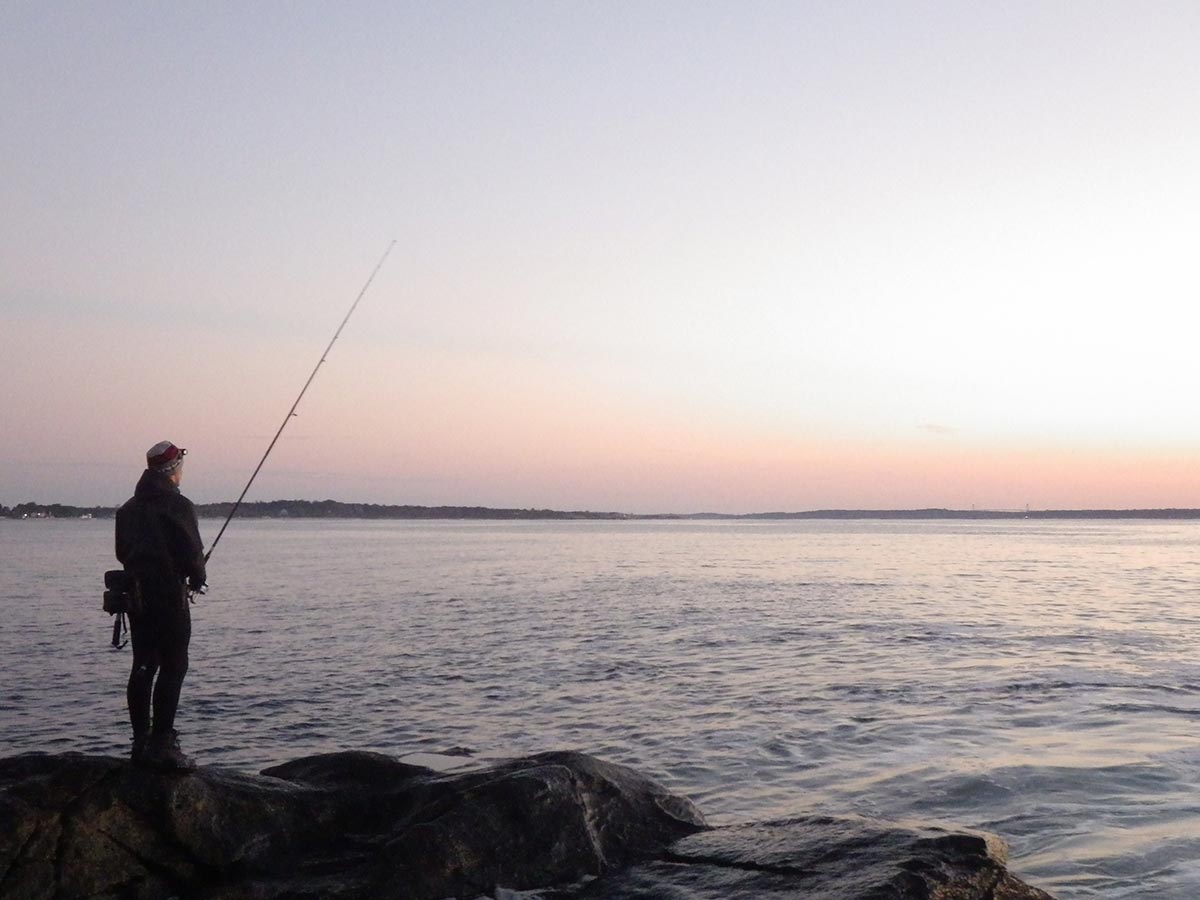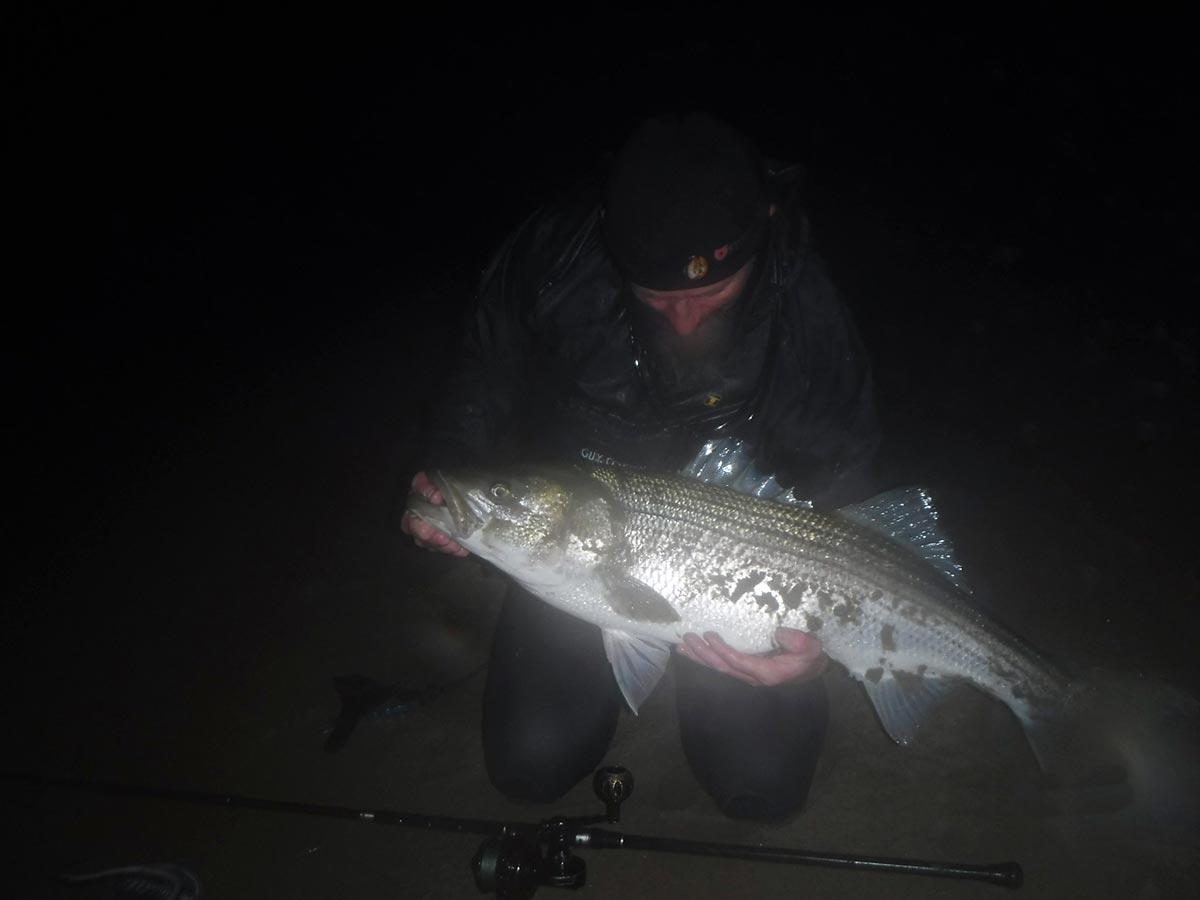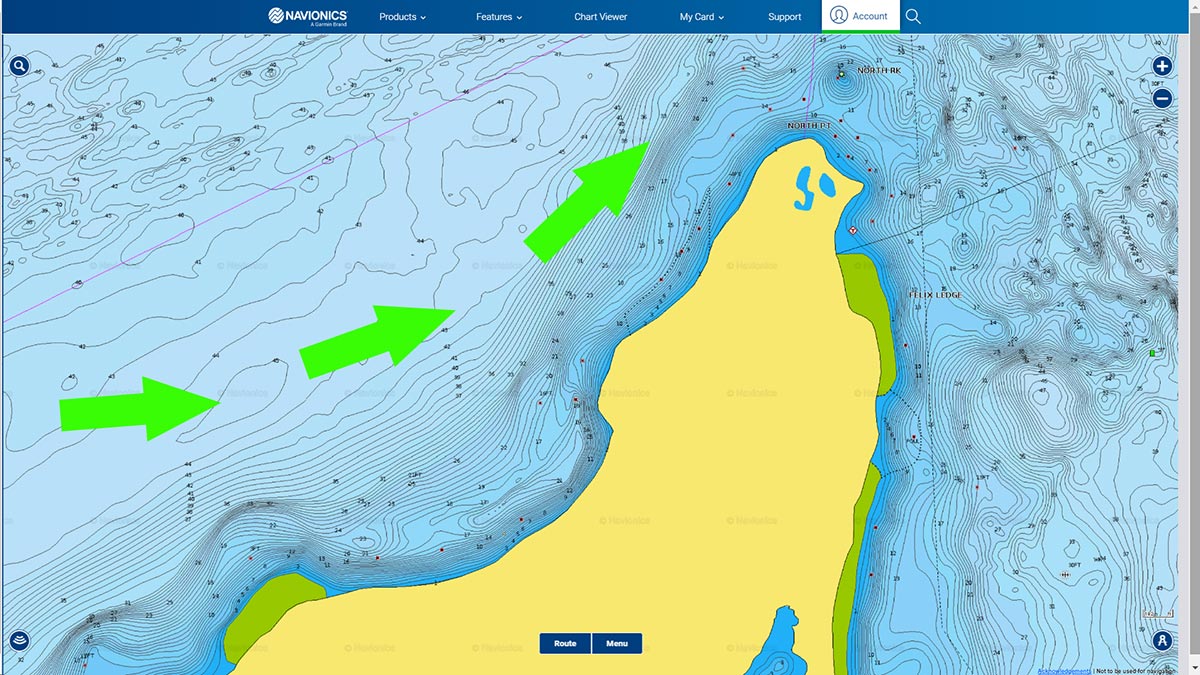
Slumps are inevitable when fishing the surf, even more so in recent years with an undeniable downtrend in striped bass stocks. What I find separates the men from the boys, so to speak, is those who find a way to fish through the tough patches. It is far too easy to throw up your hands and walk away to either seek “easy” schoolie bites or pursue other species, but those who grind it out will forever have my respect.
As I began to prepare for the summer surf, which followed a generally tough spring in Southern New England, I started thinking back on last season and how I handled those slow nights. With multi-week skunkings noted in my logbook I found myself second-guessing a few of the decisions I made, but ultimately I feel I did the right thing by not chasing easy bites and instead staying the course as in the end, it paid off. But instead of further dwelling on what might have been or how it could have been done differently, I sought out the advice of three highly-talented surfcasters here in Southern New England—James Jewkes, Jerry Audet and Dave Anderson—and I asked them how they work through a tough summer bite; here is what they had to say.
James Jewkes
When the summer doldrums set in, and big stripers seem content with hanging off the beach in cooler water, the bite can get tough. We know they still come in to feed at times and it may be frustrating to figure out what they are doing in a particular time or tide. Some of the things I do to keep looking forward and trying not to think about not catching are to work on a couple of different locations—I cast a wide net, if you will. I walk along a beach where I haven’t been lately and look for “fishy” spots. Soft structure is always changing, sometimes within a tide or two, so it’s rarely the same spot twice. Sand beaches can be long and boring, but if you can figure out how to read some of the water you just may find a new cut with a trough or a rip line from a sand bar, and along with that comes bait hideaways. When I find a new cut or trough during a tough bite during summer, I approach it with caution and stealth. You have to be careful approaching the area too fast and disrupting the surf and bait especially in calm water; this can spook fish back out of those areas. Make sure to cast well beyond the structure and work your presentation slowly into those locations, giving the best shot at a fish.
At other locations that I’ve worked over and I find trouble getting a bite, I change to baits that I don’t normally use. For example, when fishing a boulder field that seems dried up I may start working big, weightless soft plastics as slow as possible in all the nooks and crannies. By doing this I find that I work every piece of fish-holding structure and often weed out those bass that might have otherwise been missed and not seen my offering.
Another good way to break out of a slump is to fish with bait. Some may laugh or look down upon such an act, but throwing a fresh chunk of menhaden is as close to a sure bet as there is—so long as there are some fish around in the first place. At a Crazy Alberto seminar a number of years ago he stressed the idea that “chunking is fishing too.”
Simply accepting the fact that there is inherent failure in hunting large striped bass can actually help the mental side of the game. I sometimes find myself debating whether or not I should just get off the water and give up for a bit. During these times I remind myself that our striped friends are only here for a short time and I must make the best of every chance I have to fish.

Jerry Audet
The middle of summer can be difficult for me as a plug-and-fly-only fisherman. Frankly, since I don’t fish eels or bait, I have just accepted that I’m going to have to go through some rough patches. Particularly if you’re south of the Cape, you probably will have to face the same reality. Of course, one of the most critical factors this time of year is water temperature. While I think stripers are remarkably adaptable to extreme water temperatures, it certainly impacts their feeding behavior. For me, this is the number one factor that impacts my fishing tactics in the summer. That is, if the water in back-bay areas is hot—73 to 75 degrees or more—I would certainly not be fishing an outgoing tide. However, if we have a cold snap, even if that only means 60 degrees at night, it can pay to fish an outgoing tide because that water coming out into the ocean is so much colder than the open surf. This alone can pull fish to these areas. However, for the most part, fishing deeper areas under incoming tides is the way to go, and I would say fishing incoming tides makes up 80 percent of my fishing in the dog-days of summer. Think edges, where shallow water drops into deeper areas the fish can hang out during hot spells and resident fish will stage for a couple months before moving south. Often, the areas adjacent to these drop-offs are the first places the fish will visit on their nightly feeding raids.
I rely on the same plugs virtually year-round, even in the dead of summer. However, I do have a preference for really big plugs during the dog-days—big metal lips, darters, and needles. Since the fish can be lethargic, you want to give them a really tempting meal they can’t pass up. Huge plugs fished slowly—another critical piece of advice, make that meal easy to get—can induce strikes when nothing else will work. There are a couple of plug classes I am really confident in to break down a tough summer bite, and a big needle is one of them. While needlefish have so much history surrounding them during the fall, and there is no wrong time to fish them, I actually think they work particularly well during the summer. The other is a big metal lip, something over 4 ounces. Pikies, Atom-40s, and Dannys are phenomenal plugs at triggering strikes from big, fussy fish. It takes discipline to fish them, as you won’t be catching many schoolies, but the payoff can be substantial.
Dave Anderson
First I want you to conjure a memory. Travel back in your mind to when you were a kid. You’re at the beach with your mom and dad. You swim out as far you dare, your mom lifts her sunglasses and stands to call you back. You dip your head below the surface and open your eyes in the stinging salt, you see your feet hovering above the green of deep bottom. Before she can call your name you dive, kicking for your life. You dive past 10 feet and look up, what do you feel? The overwhelming sensation is cold (right?) and maybe panic as your body reels from the dramatic drop in temp.

This is what’s on my mind when the bite gets tough in the summer. I think about how awesome the air conditioner feels blowing full blast as I drift to sleep. And I think about places where that kind of cool water can be reached from shore. Before you start poring over your Captain Seagull charts looking for expanses of deep water, that’s not at all what I’m looking for. I look for places where the movement of the tide pushes deep cool water up into shallow water. These areas cause upwelling; when the deepest water crashes into these sharp undersea slopes, the water is forced upward and mixes with the inshore water, creating a zone of cooler water.
But upwelling also starts the food chain. These areas tend to be turbid almost like they’re clouded with dust as the moving water scrubs microorganisms up and away from the bottom; these feed crustaceans, which feed small fish and on and on from there. Areas that support life, support all levels of life and my experience has always come back to this phenomenon as I’ve been faced with tough summer fishing over the years.
So in a perfect world I’d look for one of two scenarios; either a shallow flat that has a steep outer edge and some strong ocean current pushing up onto the flat or, what I like to call, “access to the edge.” The edge is that second drop-off that falls off somewhere beyond the low water mark. I like to look for places where that drop-off is sharp enough to form a defined line that parallels the shore for a good distance. I feel like large stripers utilize these edges as something to follow. These areas—when positioned properly in the longshore current—can also cause the same upwelling effect.
In the summer, we’re working on resident fish; these are stripers that have settled into one area for the summer. I believe they are still on the move, but they may linger if they find things to their liking. The name of the game is finding places where they’ll come back to over and over because they provide food and favorable water temperature or structure. Food is always going to be number one, so if you can find an area that offers that ‘starting of the food chain’ that upwelling provides, the bass are never going to be too far away.




